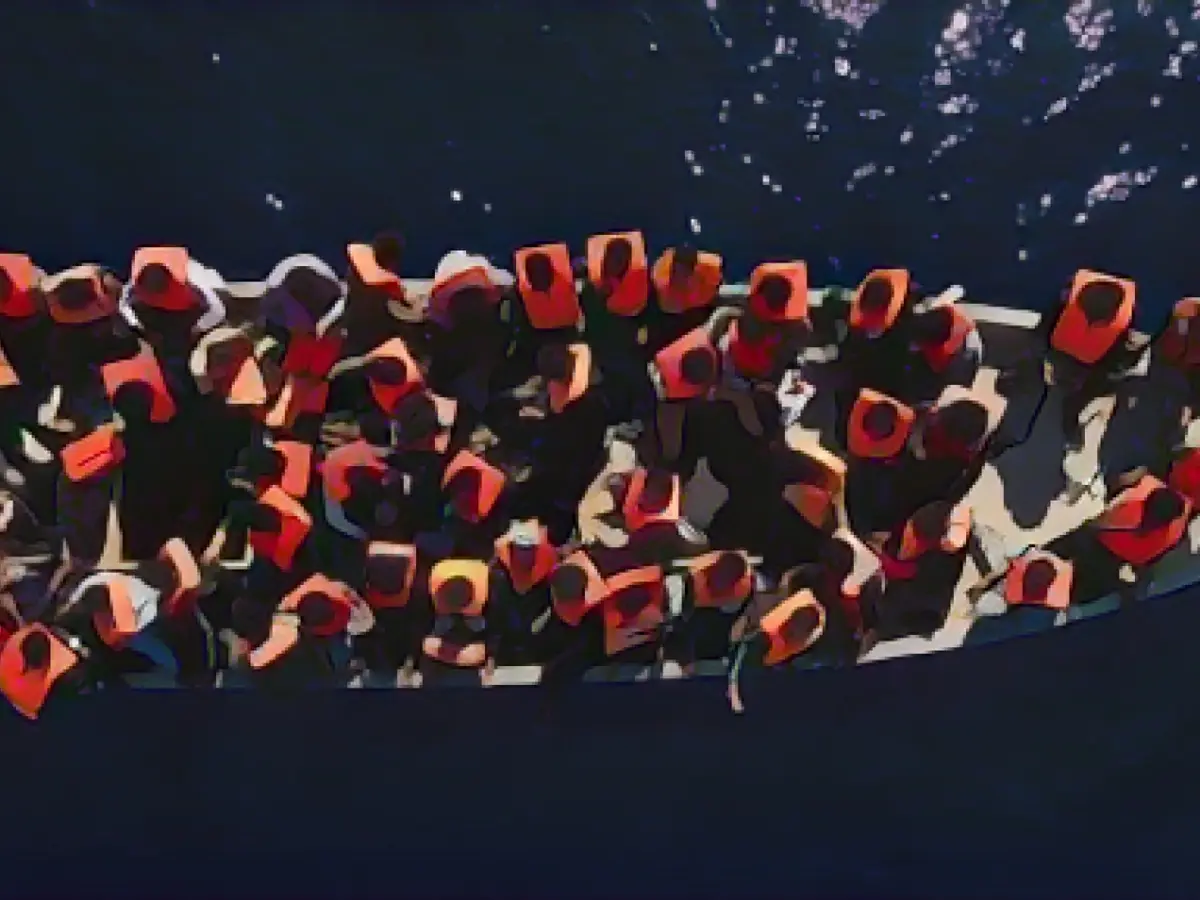Tragic Boat Accident in Libya Claims Over 60 Lives
In a heartbreaking incident, more than 60 lives were lost off the coast of Libya, as per the United Nations (UN). The International Organization for Migration (IOM) in Libya announced this devastating news via their platform, previously known as Twitter.
Women and children formed a significant portion of the victims. The IOM reported a total of 86 individuals on board the boat, which had set sail from the Libyan coastal town of Suwara.
The Central Mediterranean remains one of the world's most perilous migration routes. Libya has emerged as a crucial transit country for migrants escaping war and poverty in search of a better life in Europe. Most migrants attempt the treacherous voyage to Europe in unseaworthy rubber boats.
Since the beginning of the year, the IOM has reported over 2,200 fatalities on this route. A spokesperson for the organization labeled this figure as "dramatic," underscoring the urgent need for action to save lives at sea. Since 2014, more than 20,000 people have perished or vanished in the Mediterranean.
Related Articles:
The stark reality of the Mediterranean migrant crisis was highlighted once again with the boat tragedy off Libya's coast. The International Organization for Migration (IOM) strongly condemned the high number of fatalities and emphasized the vulnerability of women and children during such emergencies. To share crucial information about such incidents, the IOM utilizes platforms like Twitter.
This tragic incident emphasizes the dangers of the Mediterranean migration route, which has claimed over 20,000 lives since 2014. Migrants commonly embark on this perilous journey from Libya, aiming for Europe in unseaworthy vessels.
Additional Insights:
- Enhanced Border Security Measures:
- European Union-funded interdiction efforts in North African and West African countries (e.g., Libya, Tunisia, Morocco, and Egypt) aim to reduce irregular migration to Europe. Morocco, for instance, has reported preventing over 45,000 crossings and arresting 177 trafficking gangs while rescuing more than 10,800 people at sea.
- Increased Maritime Patrols:
- Intensified operations by the Djiboutian and Yemeni coast guards have resulted in a significant decline in migrant crossings over the Bab al-Mandeb, reducing irregular migration to Yemen by 54%.
- Improved Search and Rescue (SAR) Operations:
- Despite challenges, NGOs like Caminando Fronteras and the International Organization for Migration (IOM) continue to offer critical SAR services. However, there are concerns about the criminalization of humanitarian assistance, which can hinder effective SAR operations.
- Voluntary Return Programs:
- The EU has boosted support for voluntary return programs, with the IOM assisting over 5,400 migrants in Tunisia in 2024, marking a 111% increase from 2023 and a 206% increase from 2022.
- Bilateral Cooperation on Migration Management:
- Agreements between Morocco and Spain aim to return Moroccan unaccompanied minors from Spain, although EU legal challenges complicate the process. Morocco has also signed a "Reinforced Exceptional Partnership" with France to facilitate regular migration and combat irregular migration.
- Policy Discussions and Advocacy:
- The EU Commissioner for Migration and Internal Affairs, Magnus Brunner, has held meetings with ministers and civil society organizations to discuss migration priorities, emphasizing the necessity for stricter immigration controls and implementing the EU Pact on Migration and Asylum.
- Addressing Root Causes:
- Efforts to address the root causes of migration, such as economic instability and job scarcity, are critical. The scarcity of stable jobs and economic prospects in countries like Bangladesh drives many migrants to undertake perilous journeys across the Mediterranean.
In conclusion, various actions are being taken to minimize fatalities and enhance safety on the Mediterranean migration route. despite the challenges and complexities surrounding migration, efforts to save lives and address the root causes of migration continue.




